The new 2017 Hyundai Verna is the latest firecracker from the Korean carmaker. The 5th generation of the compact sedan arrives well in time to catch the festive season across India, and in typical Hyundai fashion its looks to be another blockbuster. But I have good news for you – that is not simply because the new 2017 Hyundai Verna is priced super aggressively – its more so because it is, in fact, a great little package of excellent features and good overall performance. Read on to know more! The all-new 2017 Hyundai Verna is available in diesel and petrol – and both engines types have the choice of a 6-speed manual or 6-speed automatic variant. Hyundai has ditched the 1.4-litre engines this time around and has opted for the 1.6-litre on both engines. Yes these are the engines from the last car, however they have been redone almost completely, and are now both more refined, more efficient, and for the most part, more fun too!
Also Read: 2017 Hyundai Verna - All You Need To Know
Watch Review: 2017 Hyundai Verna ☟
undefined
(The 2017 Hyundai Verna impresses with the diesel heart, torque is available much earlier too)
Also Read: New Hyundai Verna First Drive
I am in verdant Kochi to drive this new 2017 Hyundai Verna, and I am focusing my attention on the manual 1.6D variant first. Notice I said ‘D’ and not CRDi. Yup, Hyundai has chosen to drop its much celebrated CRDi badging for the common rail diesels, in favour of the subtler D badging – perhaps in an effort to appear understated, sophisticated and let's admit it – more European-like. The engine is still very much the 1.6 U2 CRDi though, and it puts out 125.4 bhp of maximum power, and 260 Nm of peak torque. The peak torque band is 1500-3000 rpm, though you get a healthy dollop of low-end torque too. In fact, that is precisely the area the engine was reworked in says Hyundai. And I have to say it gives you great driveability and flexibility, especially in city traffic, with infrequent gear changes making your drive hassle-free. In fact I could pull from 1000 rpm up in 5th gear, and at one point even started from standstill in 3rd gear! The engine is also peppy, without a hint of lag. The gearbox is well mated to it, and the car will give you good initial pickup, and acceleration too. The engine also sounds nice, with only its heart roar filtering into the cabin at higher rpms. This also tells me that Hyundai has worked on cabin NVH levels, and so all the clatter and road noise of the earlier Verna now stays out.
(Handling has improved tremendously on the 2017 Verna thanks to a stiffer suspension setup)
Where the new Verna excels in my opinion is in its ride and handling. This is one of the sportiest Hyundai sedans I’ve driven in a while, with a much stiffer setup than before. While the car does appear a tad bouncy on very uneven surfaces at high speeds, for the most part its ride is supple, and very sorted. Even at the back, you will find the ride to be extremely comfortable, as the car swallows up broken roads, small potholes and ruts with ease. Cornering is not completely precise, yet the car will give you the confidence to take it quick into a corner. The Verna now grips the road better, and its wider track and wheelbase help. This is largely due to the fact that it now sits on the K2 platform (same as the larger Elantra) unlike previous Verna and Accent that shared the i20/Creta platform. The only let down can be the brakes, which come across as still lacking like the previous Verna’s. But the steering is much improved, and more precise than before for sure.
(The coupe roofline on the new Hyundai Verna sets it apart from its three-box rivals)
I drove the Verna up into the Athirapally forest – lush green hills, thick with vegetation broken only by stunning waterfalls and streams. And the drive gave me a mix of city traffic at the start (when I drove out of Kochi), highway (while getting there), and winding hill roads (at the forest reserve). And the car came through with flying colours. Its compact proportions ease it through traffic, while also helping you cut in and out corners on country roads. The front suspension is well tuned and absorbs quick braking impact with ease. And helps the car move out of a turn quickly. The engine is also quick to respond as I have already said. The road leading deep in to the forest provided me with ample opportunity to fully test the car’s road manners and in most departments I reckon the Verna will best
its rivals. And speaking of rivals – while the car has many – it really will come down to being about beating the Honda City and Maruti Suzuki Ciaz – something the last Verna (which came in 2011) did with ease at the start of its innings, before Hyundai began to lose its grip on the segment about three years ago.
(The 2017 Verna may look like an updated version of its predecessor, but is all-new)
We then switched to the petrol, and also checked out the auto gearbox. But before that let's quickly run you through the car’s looks and features – and boy is it loaded! The design is a progression of Hyundai’s Fluidic Sculpture 2.0. As Hyundai Design’s Ha Hak Soo told me a few days ago, the last Verna was more extreme, loud, and very emotive – and this one is now more ‘grown up’, still exaggerated but sure of itself, and hence not as loud. The car will attract attention though. When you first see it, you’d be forgiven for thinking it’s a facelift on the previous Verna since proportions seem similar. It's only when you look closely that you realise it's very different, and also substantially bigger. The new Verna (or Accent as it's called elsewhere) now shared its platform with the Elantra, and not the i20 like the previous gen did. The K2 platform allows for it to be wider and have a longer wheelbase too. The face has the new ‘cascade’ front grille – which is nicely finished, but a bit too wide for my liking. The Verna in China gets a grille that’s less organic and shaped more like the Elantra’s – and I kind of think that works better! Still, the cascade grille is now the new family look – and is already on the Grand i10/Xcent facelifts too. The car gets projector headlamps (base gets halogens) and fogs, with the top variants also getting LED daytime running lights (DRLs) and LED taillights. Both are well finished, and very premium. The signature pattern in the taillight is almost like the one from the i20, only flipped 180 degrees. The car’s flanks have a sharp crease, and the roofline is really coupé-like for a change – with the roof travelling straight into the taillight housing – nice! It gives the car a distinct silhouette unlike the rivals who are all firmly three-box.
(The 2017 Hyundai Verna's interior looks understated but the quality levels are excellent)
Inside the design is a lot more subdued – again Ha Hak Soo (who heads Hyundai’s interior design by the way), told me that this was intentional. Since the outside was so bold and extroverted, the inside was kept simpler, subtler, and more understated. The cabin layout is premium though – with good use of plastic moulding on the dash, and a nice two-tone palette. The dash layout will remind you of the Elantra’s though the central console is more like the Tucson’s – with a carryover on the climate control system panel design too. The 7” touchscreen dominates this stack, and is only on offer on the two top variants. The mid trims get a 5” screen, and the base E variant gets nothing. But then that variant isn’t the one I expect mostly anyone to buy anyway. The screen is sharp with a nice display and is loaded with features. Apple CarPlay/Android Auto/Mirror Link, navigation, and an Arkamys sound system (standard from the 2nd {EX} variant and up) are all accessed through this screen. You can control the music through Hyundai’s iblue smartphone app, and the top variant also gets Auto Link which lets you check on your car’s status (health check), its stats (trip etc.), and also your driving habits (mileage information, etc.). It also connects you to roadside assistance. The top trim also gets the start stop button, keyless entry and two segment-firsts – a sunroof, and seat ventilation for the front two seats – that will be bliss for many owners in hot summer months! The top end also gets leatherette perforated seats for better cooling – all other variants have fabric seats. The higher variants also get a manual sun 'curtain' or screen for the rear windscreen.
(The 2017 Hyundai Verna is packed on features across most variants)
The AC vents are housed in a dull metal finish – which looks nice and sleek. The climate control system is also well finished and the AC is effective. On the top auto variants (and soon on the manuals too) you will also get what Hyundai calls Eco Coating – which allows the AC system to further filter out pollutants and harmful gases from entering the cabin. The instrument cluster has a display screen with lots of functions including the trip computer, settings for displays, and again barring the base E variant there is also cruise control on offer. The car’s boot is equipped with the same Smart Trunk feature as big sister Elantra. If you have the key in your pocket and approach the car’s rear – wait a couple of seconds and the trunk lid pops open on its own. Helpful when your hands are full, and a nice feature – that’s only available on the top-end SX(O) though. I haven’t even listed some of the other features on offer, and so that easily tells you that Hyundai has gone for the kill, by packing the Verna with so many goodies, that the competition is going to now almost look meagre by comparison. Good material quality inside the cabin, with good plastics will only cement that case further.
(The 2017 Hyundai Verna gets ventilated front seats - a segment first feature)
Safety gets a bump up too, with dual airbags and ABS being standard. The SX(O) also gets side and curtain airbags. Impact sensing door unlick, immobiliser, clutch lock, seatbelt pretensioners, ISOFIX child seat mounts, and central locking are standard too. Hyundai says the shell is also stringer yet lighter, with high strength steel now used in 50% of the structure. The Achilles heel of the new Hyundai Verna is the lack of generous legroom at the rear – a problem its predecessor also had. This is especially surprising given the move to the K2 platform – which could’ve meant roomier cabin. The tapering roofline also reduces headroom at the rear. But the back seat bench is comfortable, has a drop down armrest, and now the new Hyundai Verna gets rear AC vents, and even a USB phone charger outlet. In fact even in the front, below the climate control, you will find a 12V outlet, a USB-in for connectivity, and another additional USB charge point too – nice touch.
(The 2017 Hyundai Verna get auto climate control, rear vents always a nice touch)
Okay now let’s move to the Siena Brown 1.6 Gamma Dual VTVT Petrol shall we? And yes we’re driving the automatic. It’s immediately apparent that the engine is quite powerful and very silent. There's hardly any engine noise that seeps into the cabin even at 3000 rpm but of course push it higher up the rev band and the engine starts to roar. The 1.6-litre petrol engine churns out 120.5 bhp that, like the diesel, is channelled through to the front wheels via a 6-speed manual/automatic transmission. Peak torque is 151 Nm. The old four-speed automatic has been replaced with the new six-speed unit by the way – which is great news. The first impression is that the petrol is a bit lazy off the mark but once again there's good low-end torque available, to make sure you aren’t left wanting. The engine sounds a bit rev happy at times, but overall it's not bad. The gear changes are seamless and it's neither clunky nor jerky – the auto is smooth then, and that's a relief. Even going up a slope is not an uphill task (pun intended) but the autobox shifts around 3000-3500 rpm on lower gears and around 2500 rpm for higher gears. What you miss though is cladding for the dead pedal, which frankly could have easily been done. It's a bit odd and sticks out like a sore thumb.
(The 1.6 Petrol on the Verna feels a bit lazy but there is strong low-end torque on offer)
But otherwise the petrol too comes across as refined and mature. The brown paint shade looks pretty upmarket. It is one of the new colours on offer along with the Fiery Red, Flame Orange and Star Dust (its metallic grey, don’t know why it couldn’t have been called Stardust Grey for crying out loud!). The car also gets the expected white, black and silver options – making 7 colours the maximum paint offerings on the Verna now. I have to say the orange is a stunner, but the car looks more stately (and somehow visually bigger) in the grey and brown. Prices on the Verna are introductory and are immensely attractive (see table below). But these are introductory and Hyundai will price-protect only the first 20,000 buyers. Post that number being achieved the company says it will hike prices for sure. In its opening week itself, the car has garnered over 5000 bookings so that shouldn’t take long I guess!
(Despite a few weaknesses, the new Hyundai Verna is set to become a benchmark)
2017 Hyundai Verna Prices:
| Variants |
Petrol |
Diesel |
| E |
Rs. 7,99,900 |
Rs. 9,19,900 |
| EX |
Rs. 9,06,900 |
Rs. 9,99,900 |
| SX |
Rs. 9,49,900 |
Rs. 11,11,900 |
| SX (O) |
Rs. 11,08,900 |
Rs. 12,39,900 |
| EX AT |
Rs. 10,22,900 |
Rs. 11,39,900 |
| SX+ AT |
- |
Rs. 12,61,900 |
| SX (O) AT |
Rs. 12,23,900 |
- |
I think its safe to say that despite its very few weaknesses, the Verna is set to become the segment benchmark. It handles well, has great ride quality, is punchy in its performance, and looks upmarket. And let’s not forget the indulgent feature list that will pamper its buyers. Given the incredible price tag (lower by as much as Rs. 1 lakh variant to variant against some rivals), the new 5th generation Verna is well on its way to become another blockbuster for Hyundai Motor India. Launching it well ahead of the festive season and catching even Onam and Ganesh Chaturthi is another masterstroke. The company has a slightly strange tagline for the product (like so many others!) – that says Intelligent By Design. Honestly the car’s business pan and product strategy is the one that’s really intelligent.
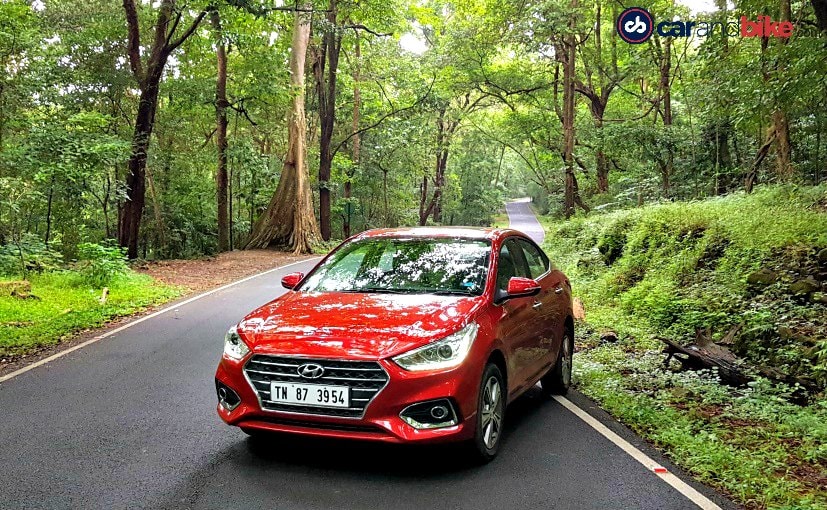
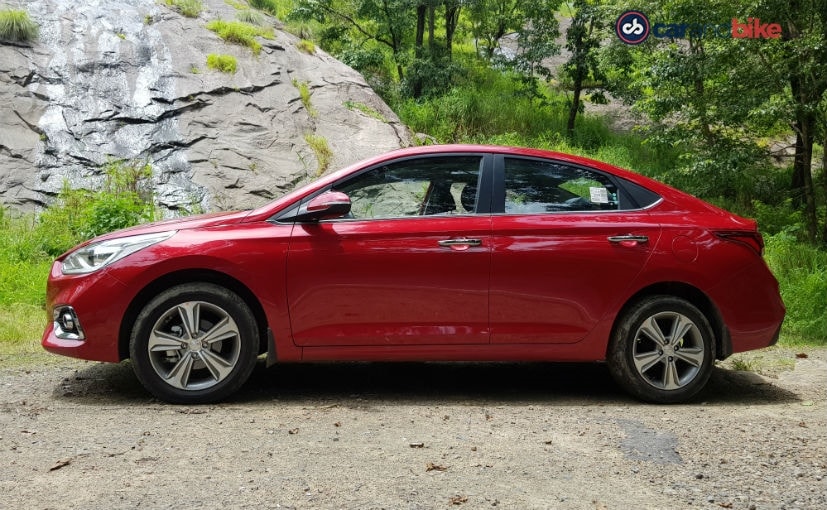
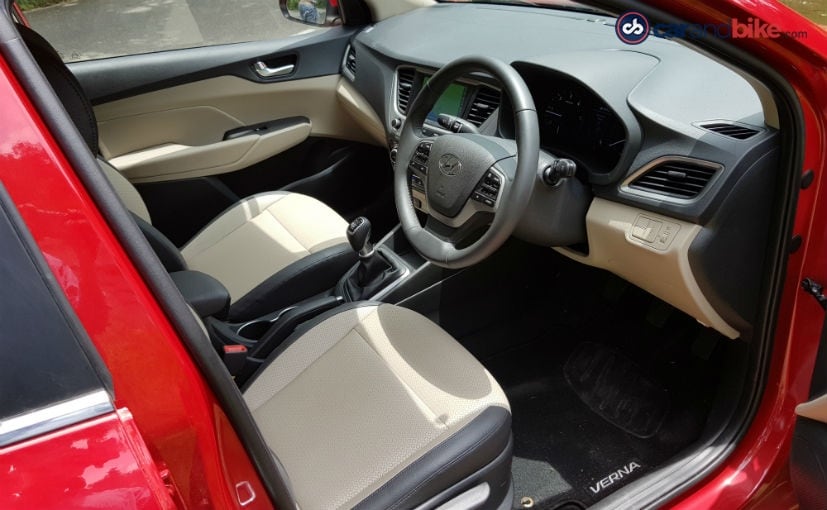

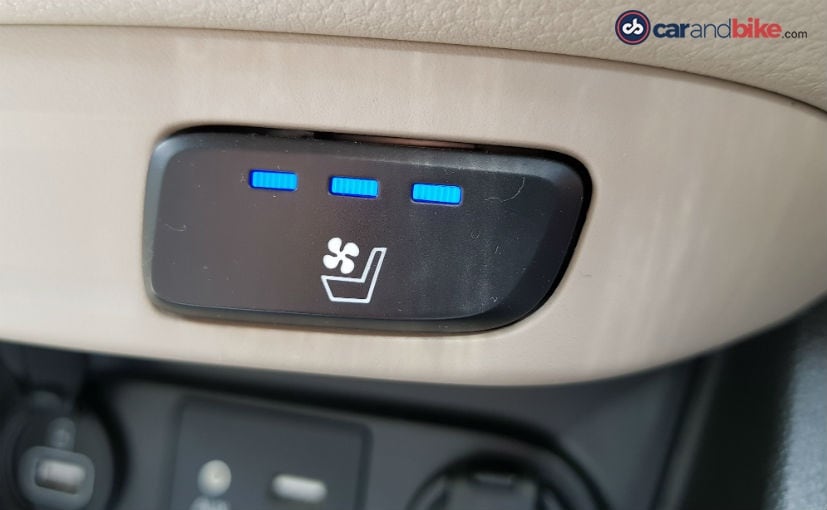


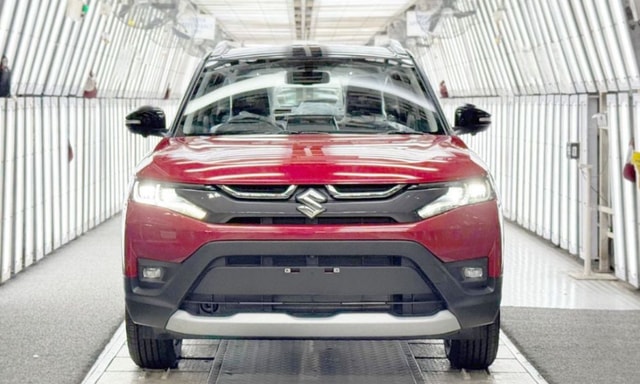 Seshan Vijayraghvan | Jan 20, 2026Maruti Suzuki To Invest Rs. 35,000 Crore For Setting Up New Manufacturing Plant In GujaratThe new facility will come up in Khoraj, on 1,750 acres of land provided by Gujarat Industrial Development Corporation (GIDC).2 mins read
Seshan Vijayraghvan | Jan 20, 2026Maruti Suzuki To Invest Rs. 35,000 Crore For Setting Up New Manufacturing Plant In GujaratThe new facility will come up in Khoraj, on 1,750 acres of land provided by Gujarat Industrial Development Corporation (GIDC).2 mins read car&bike Team | Jan 20, 2026Bajaj Pulsar 125 Updated With LED Headlamp, Indicators; Prices Start From Rs 89,910Updates are limited to the Pulsar 125 Carbon Fibre series.1 min read
car&bike Team | Jan 20, 2026Bajaj Pulsar 125 Updated With LED Headlamp, Indicators; Prices Start From Rs 89,910Updates are limited to the Pulsar 125 Carbon Fibre series.1 min read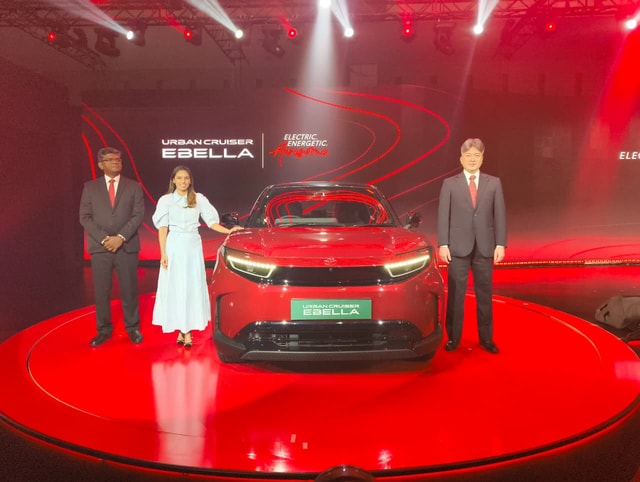 Seshan Vijayraghvan | Jan 20, 2026All-Electric Toyota Urban Cruiser EBella Introduced; Booking Open For Rs. 25,000Prices for the Toyota Urban Cruiser eBella are yet to be announced, but bookings are open at Rs. 25,000.1 min read
Seshan Vijayraghvan | Jan 20, 2026All-Electric Toyota Urban Cruiser EBella Introduced; Booking Open For Rs. 25,000Prices for the Toyota Urban Cruiser eBella are yet to be announced, but bookings are open at Rs. 25,000.1 min read Jaiveer Mehra | Jan 20, 2026Skoda Kodiaq RS India Launch In Q2 2026; Additional 100 Units Of Octavia RS India-BoundAside from debuting the facelifted Kushaq in India, Skoda had some big product announcements for the year, including a second batch of Octavia vRS and the new Kodiaq vRS.2 mins read
Jaiveer Mehra | Jan 20, 2026Skoda Kodiaq RS India Launch In Q2 2026; Additional 100 Units Of Octavia RS India-BoundAside from debuting the facelifted Kushaq in India, Skoda had some big product announcements for the year, including a second batch of Octavia vRS and the new Kodiaq vRS.2 mins read Jaiveer Mehra | Jan 20, 20262026 Skoda Kushaq Facelift Revealed With New Tech, Powertrain Updates2026 Kushaq gets a notable styling refresh, new features and a new 8-speed automatic gearbox option for the 1.0 TSI engine.3 mins read
Jaiveer Mehra | Jan 20, 20262026 Skoda Kushaq Facelift Revealed With New Tech, Powertrain Updates2026 Kushaq gets a notable styling refresh, new features and a new 8-speed automatic gearbox option for the 1.0 TSI engine.3 mins read car&bike Team | Jan 19, 2026Skoda Kushaq Facelift Debut Tomorrow: What To ExpectFacelifted Kushaq to get updated looks and new tech inside the cabin.1 min read
car&bike Team | Jan 19, 2026Skoda Kushaq Facelift Debut Tomorrow: What To ExpectFacelifted Kushaq to get updated looks and new tech inside the cabin.1 min read Amaan Ahmed | Jan 17, 2026Bajaj Chetak C25 First Ride Review: Basic, Likeable E-Scooter For First-Time RidersThe Chetak C25, in quite a few ways, is poles apart from the larger and more powerful 30 and 35 Series models, but in its mannerisms, it is very much a Chetak.8 mins read
Amaan Ahmed | Jan 17, 2026Bajaj Chetak C25 First Ride Review: Basic, Likeable E-Scooter For First-Time RidersThe Chetak C25, in quite a few ways, is poles apart from the larger and more powerful 30 and 35 Series models, but in its mannerisms, it is very much a Chetak.8 mins read Bilal Firfiray | Jan 9, 2026Toyota Urban Cruiser Hyryder: 10,000 km Long-Term ReviewAfter spending over three months and 10,000 km with the Toyota Urban Cruiser Hyryder Hybrid, we were impressed by its real-world mileage, seamless hybrid, practical comfort, and Toyota reliability. Is it the best C-SUV then?5 mins read
Bilal Firfiray | Jan 9, 2026Toyota Urban Cruiser Hyryder: 10,000 km Long-Term ReviewAfter spending over three months and 10,000 km with the Toyota Urban Cruiser Hyryder Hybrid, we were impressed by its real-world mileage, seamless hybrid, practical comfort, and Toyota reliability. Is it the best C-SUV then?5 mins read Seshan Vijayraghvan | Jan 8, 20262026 Mahindra XUV 7XO Review: Big On Tech, Bigger On ComfortThe new Mahindra XUV 7XO is flashier, feature packed, and comes with more advanced tech. But are the changes just incremental or actually substantial?1 min read
Seshan Vijayraghvan | Jan 8, 20262026 Mahindra XUV 7XO Review: Big On Tech, Bigger On ComfortThe new Mahindra XUV 7XO is flashier, feature packed, and comes with more advanced tech. But are the changes just incremental or actually substantial?1 min read Preetam Bora | Jan 10, 2026Simple One Gen 2 First Ride Review: 265 km Claimed Range!The Gen 2 model of Simple Energy’s first electric scooter gets a fair few updates, including new features, tech, more range and lighter weight. We spent a couple of hours with the Simple One Gen 2 to find out if it manages to impress.6 mins read
Preetam Bora | Jan 10, 2026Simple One Gen 2 First Ride Review: 265 km Claimed Range!The Gen 2 model of Simple Energy’s first electric scooter gets a fair few updates, including new features, tech, more range and lighter weight. We spent a couple of hours with the Simple One Gen 2 to find out if it manages to impress.6 mins read Amaan Ahmed | Jan 3, 2026VLF Mobster 135 300 KM Review: Fun But FlawedA 125 cc scooter with Italian design and Chinese genes is a rare combination, and while some may be tempted to dismiss it because of its origins, the VLF Mobster shows 125s can also be exciting – but not without compromises.11 mins read
Amaan Ahmed | Jan 3, 2026VLF Mobster 135 300 KM Review: Fun But FlawedA 125 cc scooter with Italian design and Chinese genes is a rare combination, and while some may be tempted to dismiss it because of its origins, the VLF Mobster shows 125s can also be exciting – but not without compromises.11 mins read



































































































































